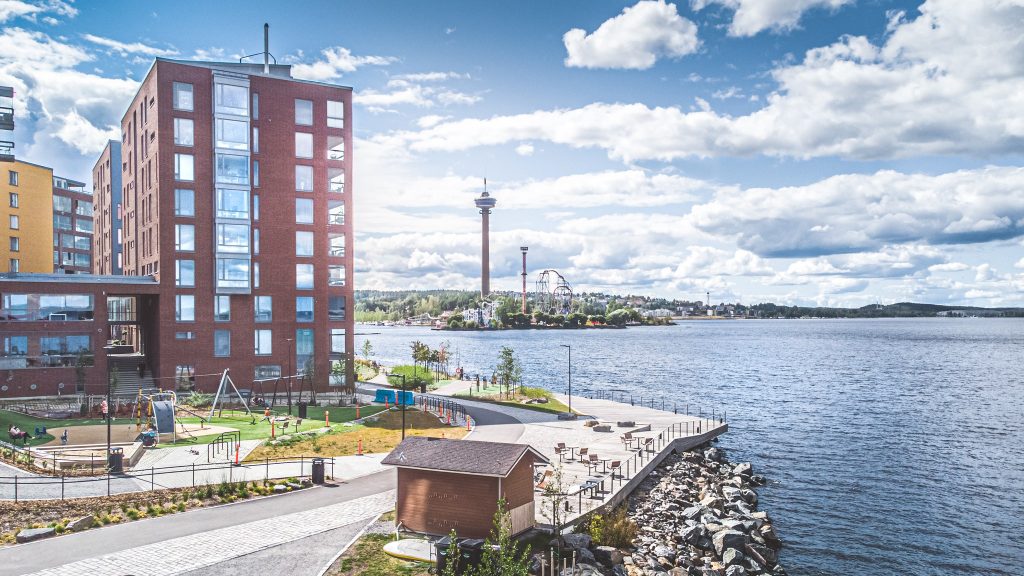
From generation to generation
Solutions to the challenges of
sustainable development

Together towards net zero energy cities
Urban Energy Pact project brings eight partner cities and organisations from all around Europe together to embrace the ambitious goal of becoming net zero energy (NZE) territories no later than 2050. Urb-En Pact aims to define local action plans for the implementation of a local and sustainable energy balance by producing and delivering renewable and regulated sources of energy. Urb-En Pact will unite all of the stakeholders of this circular economy, especially the consumers included in this energy loop, in and around the metropolitan area.
Where does Tampere stand?
City of Tampere aims to become carbon neutral by 2030. The Roadmap for carbon neutrality as part of the sustainable Tampere 2030 Programme is the key policy instrument influencing the city’s sustainability activities.
In the period from 1992 to 2015, Finland’s greenhouse gas emissions reduced by 45,5 % per head. The 2030 target will require an 80 % reduction in carbon emissions over the 1990 figure. The city of Tampere is concerned that much of the “low hanging fruit” has been addressed and they feel they are running out of straightforward opportunities. The next set of initiatives will be more expensive.
The city is piloting an ambitious urban regeneration project redeveloping the district of Hiedanranta, which is the site of a former paper mill. A goal for this area is to be a Net Zero Energy territory. Other project goals include having 25,000 inhabitants and 10,000 jobs, and to link the urban regeneration to research and higher education. They will also aim to stimulate many businesses with “local service” business models. A greater proportion of wood will be incorporated within the building structures (wood is an integral structural element of buildings in Austria but tends not to be used for structural elements in other European countries). Hiedanranta is 5 km from the centre and the city’s tram line will be extended to this area as part of a Phase II expansion.
Tampere Municipality is looking to develop a web presence, essentially a platform through which stakeholders (companies, research centres, universities, citizens and the city municipality) can work together. The goal is to increase the transparency of their activities and to stimulate stakeholders’ engagement in low carbon activity.
The Municipality is preparing a “proposal specification” which will be circulated to stakeholders (who have been involved earlier in the process). This will set out what will be needed from the platform and how best to take the project forward. Helsinki Municipality has developed a similar platform for their Municipality but it is felt that it does not translate well to Tampere.
Residential buildings of the Tampere area are mostly privately own and the owners make renovation and running of the building decisions. Building owners need guidance and advice to understand where to get more information, help to plan and design renovations, apply for subsidies and overall understand which renovations are viable and potential. Advice services can be executed nowadays via web page platforms that utilize open energy data and renovation models for different kinds of buildings. There’s a big potential for these automated systems that city of Tampere’s Smart Tampere programme would like to develop, test and take into use.
Results
Urban Energy Pact project results will be published here. Be sure to visit our website regularly to keep up with us!
What do European children think about energy? We asked them!
The Action Plans of every Urb-En Pact City were presented in Grenoble in May 2022.

Tampere Climate Budget keeps the city on track and Nokia Arena event venue shines as a sustainability forerunner. Read the full article HERE.
